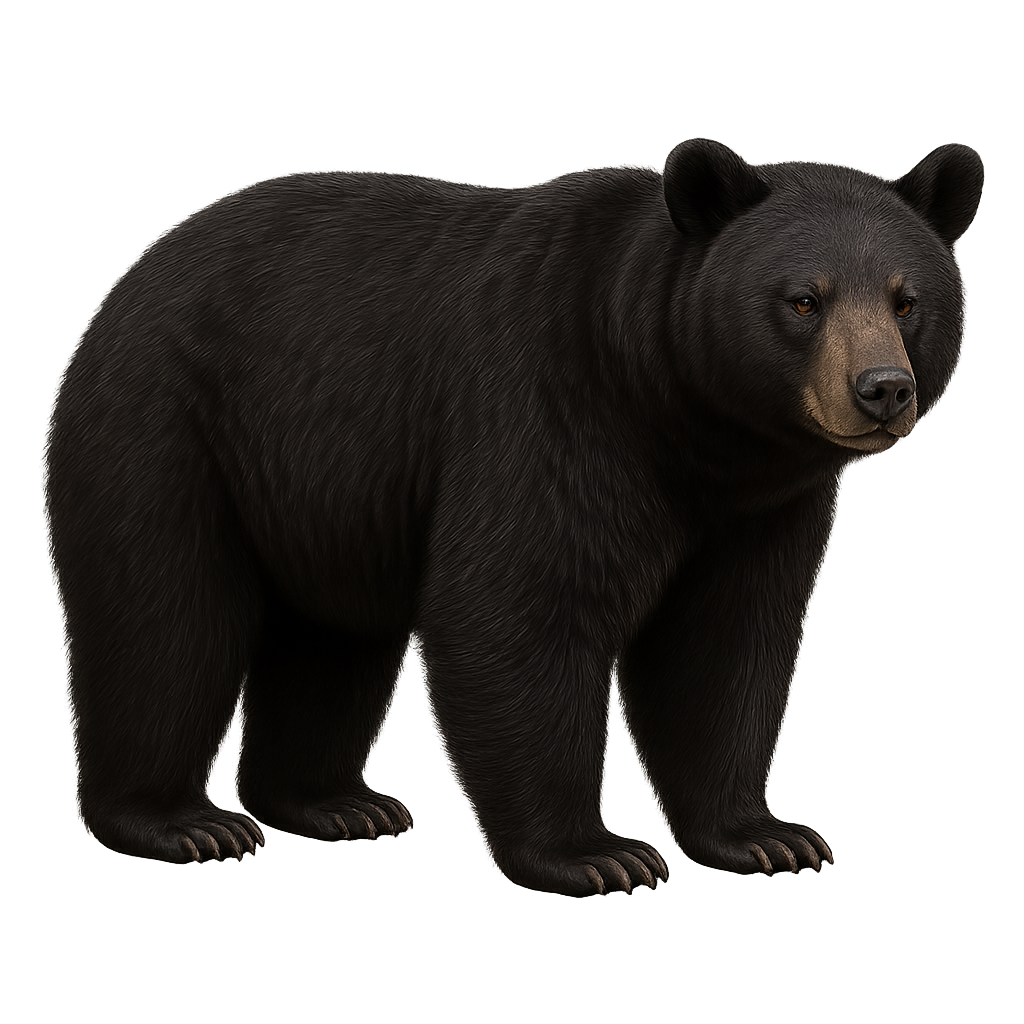Observe and photograph a species in its natural habitat
Learn where and when to observe a species in the wild, how to recognize it in the field, and what habitats it lives in. Get photography tips adapted to its behavior and capture stunning images without disturbing the animal. For full details, open the complete profile in the WildlifePhotographer app.
American Black Bear
Scientific name: Ursus americanus

IUCN Status: Least Concern
Family: URSIDAE
Group: Mammals
Shyness: Shy
Safe distance: 50 m
Breeding season / Courtship: 01.06-31.07
Gestation: 6 à 7 mois
Births: 01.01-28.02
Habitat:
Mixed forests of North America
Description:
The American Black Bear is a large carnivore primarily found in North America, in forests, mountains, and wooded areas. It measures between 1.5 and 2.5 meters in length and weighs between 45 and 250 kg, depending on the subspecies and habitat conditions. Its coat ranges from black to light brown, and it has a short muzzle and a large head. The Black Bear is an omnivore, primarily feeding on fruits, berries, nuts, roots, fish, small mammals, and sometimes carrion. It is also an excellent climber and a skilled swimmer, capable of moving through trees and crossing rivers in search of food. While its population remains relatively stable, the Black Bear is threatened by habitat loss, vehicle collisions, and hunting.
Recommended lens:
>=300 mm
Photography tips:
Approach slowly and discreetly, using a telephoto lens, to avoid disturbing the black bear, which can quickly become wary and move away if disturbed.
Photograph early in the morning or late in the afternoon, when the light is soft and the bear is more active, often foraging for food in forests or near water sources.
Capture moments of natural behavior: The black bear is an omnivore and spends a lot of time searching for food, providing opportunities for interesting photos when it is foraging or climbing trees.
Be patient and respectful: Respecting the black bear's space is crucial. Do not follow it too closely and ensure you do not disturb its feeding habits or territory.
The black bear is a species of minor concern, but it is important to respect its natural habitat and not disturb its behaviors. Avoid any interference with its feeding or breeding areas and follow local conservation rules to preserve this species.
Ready to take action?
Choose your platform and start your free trial today



